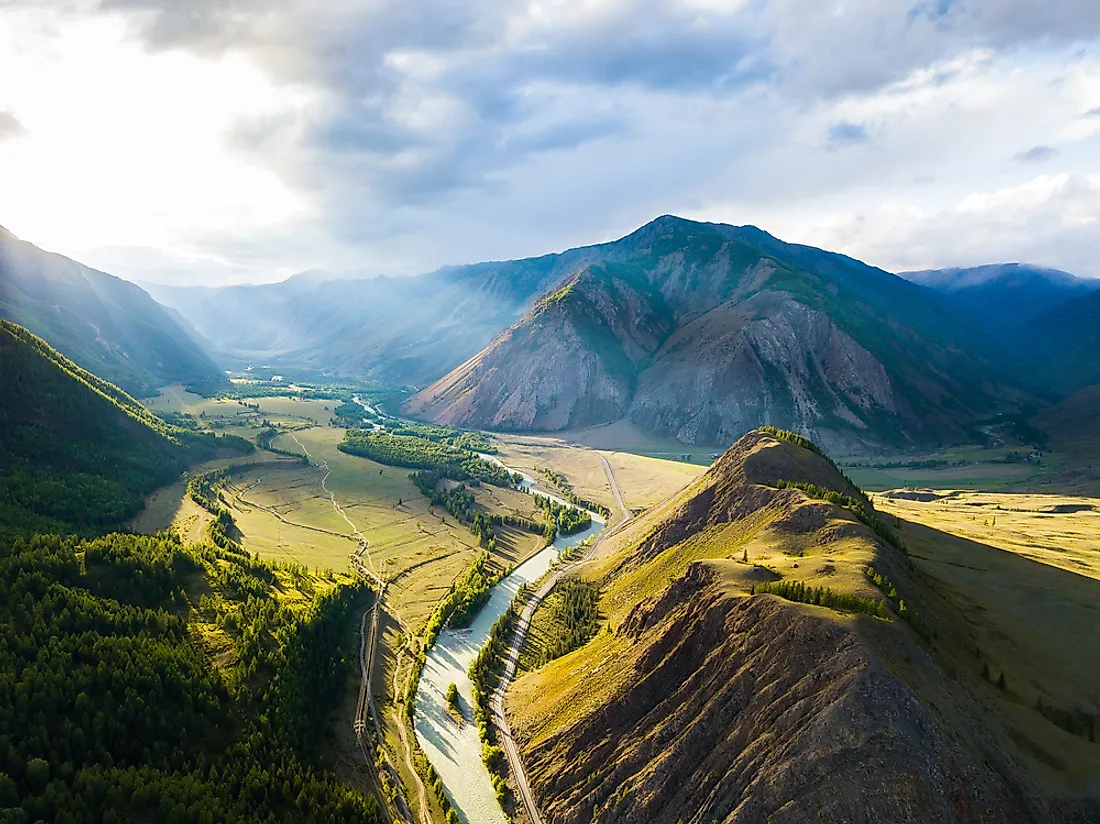Where Is The Altai Republic?

Russia is the world’s largest country, encompassing an area of approximately 6.6 million sq mi. It is located in both Eastern Europe and Northern Asia, making it one of the few transcontinental countries. Additionally, with an estimated population of 147 million, Russia is the ninth most populous country in the world. Throughout parts of its history, the country did not have a clear political system, partly because of Soviet administration. However, following the dissolution of the Soviet Union in 1991 and the adoption of a new constitution in 1993, Russia finally had a well-defined administration and political system. For administrative purposes, the country is divided into 85 federal subjects or constituent units. There are various types of federal subjects that have different levels of autonomy: oblasts (46), republics (22), krais (9), autonomous okrugs (4), federal cities (3), and one autonomous oblast. An example of one of Russia's federal subjects is the Altai Republic.
What Is the Altai Republic?
The Altai Republic is a federal subject and one of 22 republics in Russia. It is located in the West Siberia region of North Asia, within the Altai Mountains. The federal subject covers an area of approximately 35,800 sq mi and is also part of the Siberian Federal District. According to the 2010 census, the Altai Republic had an estimated population of 206,000, ranking as the least populated republic in Russian. Gorno-Altaysk is the Altai Republic's capital and largest town. In terms of demographics, Russians make up the majority of the republic's population (57%), followed by the indigenous Altay people (35%), as well as small Kazakh, German, and Central Asian populations.
Geography
The Altai Republic is located in the Altai Mountains, where Russia meets the steppes of Kazakhstan, the semi-deserts of Mongolia, and the Siberian taiga. Given its location in the Altai Mountains, the republic occasionally experiences seismic activity. The Altai Republic is crossed by more than 20,000 rivers, which make up a combined 37,000 miles of waterway. The two largest rivers in the Altai Republic are the Katun and Biya, which eventually join to form the Ob River. The region is rich in mineral resources such as iron, silver, gold, and lithium. About 25% of the Altai Republic is covered by forest, and the region experiences a temperate continental climate that is characterized by long, cold winters and short, mild summers.
Economy
Based on its geography, the Altai Republic is primarily an agricultural region. However, several other industries operate in the republic, including food processing, gold mining, dairying, and chemical industries. Additionally, the tourism industry has greatly expanded, although most tourists are wealthy Russians from neighboring republics rather than international visitors. Tourist activities are mainly concentrated in the north because its roads are more accessible. The Altai Republic has no rail access, and its major paved road is the Chuysky Tract, which runs from the republic’s capital in the north to the border with Mongolia in the south.
Administration
For administrative purposes, the Altai Republic is divided into ten districts and Gorno-Altaysk Urban Okrug. The districts are further subdivided into 92 rural settlements, which are called selsovets. The largest district is Shebalinsky District, which has a total of 13 selsovets, followed by Kosh-Agachsky, which contains 12 selsovets. The Altai Republic has its own constitution and legislative assembly, but the federal government represents the republic in international affairs.











